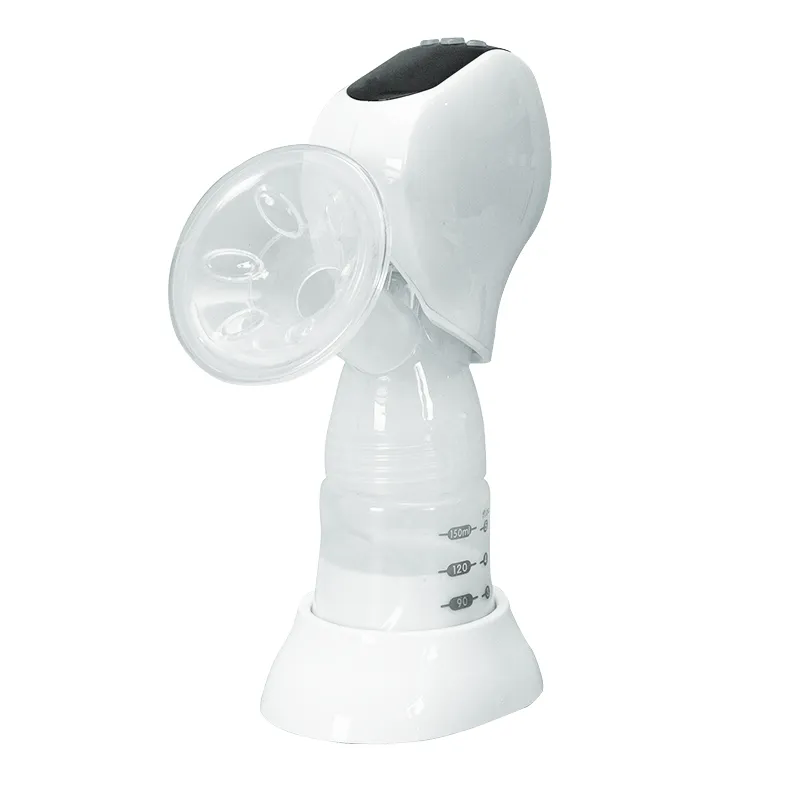What Should You Know Before Choosing a Breast Pump?
2024-11-12
For new parents, a breast pump can be an essential tool, offering flexibility and convenience in managing breastfeeding. But with so many options available, how do you choose the best breast pump for your needs? Here’s a guide to the most important factors to consider before making a decision.
1. What Types of Breast Pumps Are Available?
There are various types of breast pumps, each designed to meet different needs:
- Manual Pumps: These pumps are hand-operated, giving you control over the rhythm and speed. They’re lightweight, affordable, and quiet, making them suitable for occasional pumping. However, they require more effort, so they may not be ideal for frequent use.
- Electric Pumps: Electric pumps, including single and double electric models, use a motor to create suction, making pumping faster and less labor-intensive. Double electric pumps allow you to pump both breasts simultaneously, saving time and helping maintain milk supply for regular pumping sessions.
- Wearable or Hands-Free Pumps: These are compact, battery-operated pumps designed to be worn inside your bra, allowing for discreet pumping on the go. They’re great for busy parents but may be more expensive and have smaller milk containers.
- Hospital-Grade Pumps: Hospital-grade pumps are high-performance pumps that offer strong suction and efficiency, often used in hospitals and recommended for mothers who need to establish or increase their milk supply. They’re larger and more expensive but can be rented for short-term use.
2. How Often Will You Be Pumping?
Frequency of pumping is an important consideration. For occasional pumping, a manual pump or single electric pump may be sufficient. If you’re planning to pump regularly, such as if you’re returning to work, a double electric pump or a hands-free model could be more efficient and time-saving.
3. Is Portability Important to You?
If you’re frequently on the go, look for a pump that’s portable and easy to transport. Many electric pumps come with rechargeable batteries or adapters, allowing you to pump without needing an electrical outlet. Hands-free and wearable pumps offer the most flexibility in terms of portability, making them ideal for busy parents who need to pump discretely outside the home.
4. Is Suction Strength and Comfort Adjustable?
Comfort is a critical factor when using a breast pump. Look for pumps with adjustable suction levels and speed settings, allowing you to customize the experience to your comfort level and milk flow. Many electric pumps mimic a baby’s natural suckling rhythm, starting with a gentle stimulation phase before transitioning to a stronger expression phase. A customizable, comfortable pump can help make the experience more enjoyable and reduce the risk of discomfort.
5. What Size Flanges Do You Need?
Flanges are the funnel-shaped parts that fit over your breasts, and choosing the right size is essential for comfort and efficient milk expression. Some pumps come with multiple flange sizes, but others require you to purchase different sizes separately. Getting a proper fit is crucial, as a flange that’s too large or too small can lead to discomfort and reduced milk output. Many brands offer sizing guides or allow you to measure your nipple diameter to ensure a proper fit.
6. What Features Will Make Pumping Easier?
Certain features can make pumping more convenient and efficient:
- Memory Functions: Some pumps remember your preferred settings, allowing you to get started quickly each time.
- LED Display and Timer: A built-in timer and display help you track your pumping sessions and adjust settings as needed.
- Quiet Operation: If you plan to pump in shared or quiet spaces, a pump with quiet operation can make the experience more discreet.
- Closed System: Closed-system pumps have a barrier to prevent milk from entering the tubing, keeping the pump more hygienic and reducing the need for cleaning.
7. Is It Easy to Clean and Maintain?
Cleaning breast pump parts can be time-consuming, so consider how easy it is to disassemble, clean, and reassemble the pump. Closed-system pumps generally require less frequent cleaning of the tubing, as milk is less likely to enter the system. Many pumps also come with dishwasher-safe parts or fewer components, making the cleaning process simpler.
8. What’s Your Budget?
Breast pumps come in a range of prices, from affordable manual pumps to higher-end electric or wearable models. Setting a budget will help narrow down your options and ensure you get the best value for your needs. Keep in mind that some health insurance plans cover the cost of a breast pump, so it’s worth checking with your provider to see if you’re eligible.
9. Do You Have Access to Support or Spare Parts?
Breast pumps may need replacement parts or accessories over time, such as tubing, membranes, or valves. Choosing a reputable brand with easily accessible spare parts and customer support can make maintenance easier. Some brands also offer lactation support or consultations, which can be valuable if you encounter challenges while pumping.
In Conclusion
Choosing the right breast pump depends on your specific needs, including your pumping frequency, lifestyle, and comfort preferences. Whether you’re looking for a simple manual pump, an efficient double electric pump, or a discreet hands-free option, there’s a model designed to meet your requirements. By considering these factors, you’ll be able to find a breast pump that supports you on your breastfeeding journey, providing convenience, comfort, and reliability.



